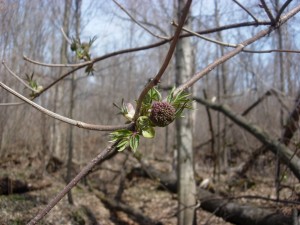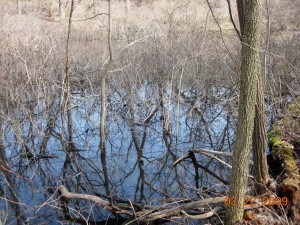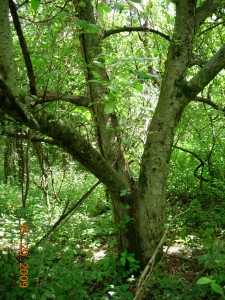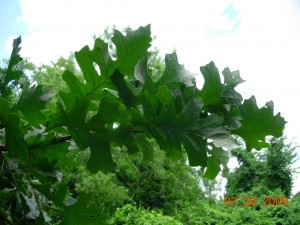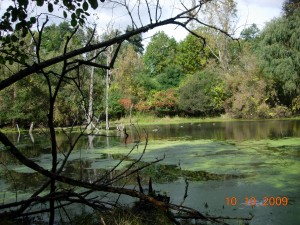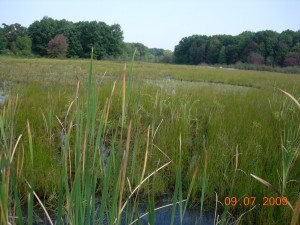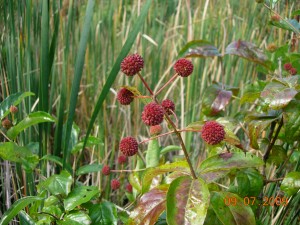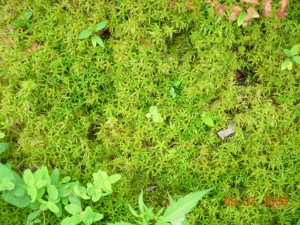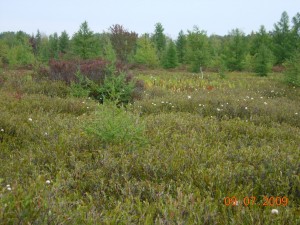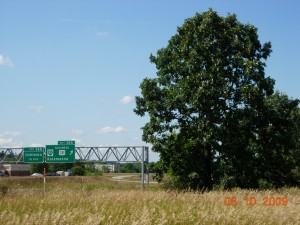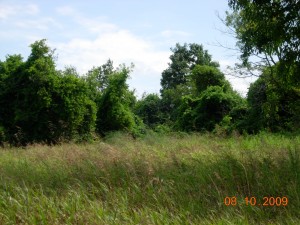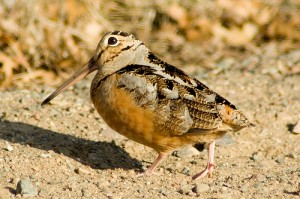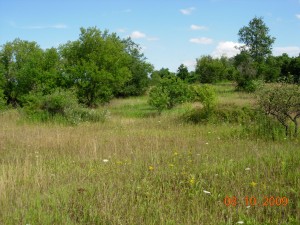Last week I finished my annual American columbo census. Every year in June, I check up on a marked population of American columbo (Frasera caroliniensis) plants in the oak woods near where my wife and I live in Oshtemo Township. Here in southwest Michigan, columbo was an oak savanna plant. I suspect that today this township, which was mostly savanna at settlement, has more columbo remaining than anywhere else in Kalamazoo County.
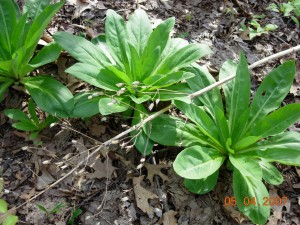
Rosettes of American columbo. Last year's dried flowering stalk from another plant is the diagonal between the two rosettes. Photo by Richard Brewer
The usual way a person encounters columbo is to find one or a group of its basal rosettes. These look rather like the basal rosettes of the well-known biennial weed common mullein except that the elongate oval leaves of columbo are thin, smooth, and green instead of thick, furry, and silvery like mullein.
Occasionally one sees a columbo flowering stalk. It’s an impressive sight, often six or even eight feet tall, smooth and green, with several whorls of leaves and a great number of branches in the upper whorls bearing dozens or hundreds of small flowers on slim stems. Though small, the flowers are striking looking, symmetrical with greenish-white, purple-dotted petals. Long ago, in southern Illinois, when my friend Kenny Stewart and I found a blooming columbo, he described the flower as looking like a botany text book diagram of flower structure. Calyx, corolla, stamens, a pistil, all the parts are laid out just as they should be, plus in the middle of each petal, a fringed nectar-producing gland.
Seven years ago, I decided to follow the fortunes of one patch of 121 columbo plants spread over an acre or so of oak woods. Two other patches of similar size exist several hundred feet away, one to the east and one to the west. Ralph Babcock, a friend and former student, joined me to spend a day marking each plant by means of an orange plastic flag on a wire. We gave each plant a number, written on the flag using a marking pen with super-permanent ink, and I recorded each location using direction and distance to landmarks and nearby plants. A little later in the summer, we recorded size and other information about each rosette.
Giving each plant an identifying number allows me to follow what happens to each one individually, like birds in a banded population. Every June, I check to see which plants are still there and their size and condition and to replace weathered and missing flags.

Am. columbo plant number 52. On 23 June 2009, the rosette was composed of 30 leaves and had a diameter of 54 cm. Photo by Richard Brewer
The census usually takes me four or five days, a few hours each day. Last year I postponed replacing fading and tattered flags because I wanted to record what other plant species were within a meter or so around each plant and to note something about the topography and litter depth for each point. So this year’s census took a little longer than usual because I had to make 39 new flags and renew the writing on many others.
As to the plants in the neighborhood, the big trees are mostly white oak, black oak, sassafras, wild black cherry, pignut hickory, and red maple A few of the herbs are sweet cicely (which went from flowers to fruit just in the week when I was censusing), white avens ( in flower now), Indian pipe (not quite up yet this year), rattlesnake fern, spotted wintergreen, and lopseed. There’s a fair amount of poison ivy and Virginia creeper on the ground too, more every year.
Some of the birds I hear singing or calling while I work on the columbo are Wild Turkey (pretty quiet lately), Ovenbird, Wood Pewee, Great Crested Flycatcher, Black-capped Chickadee, Tufted Titmouse, White-breasted Nuthatch, Rose-breasted Grosbeak, Blue Jay, Red-eyed Vireo, and Scarlet Tanager.
Other vertebrates are sparse. A few days ago, I saw something hop close to one of my points and was able to find it and see the cross on its back. It was a spring peeper back from the ponds a few hundred yards away, where they were peeping and mating in April.
There are plenty of deer, though less in evidence now than most of the year. The deer do not eat the columbo and also avoid stepping on them. Of course, the rosettes die back above ground in the winter, leaving the crown of the large taproot just below the soil surface, so the deer have no visual clues of the columbo from fall to spring. The deer do blunder into the orange flags, occasionally dislodging them and often bending the wires. Nothing else seems very interested in the columbo foliage either–not the chipmunks, fox squirrels or even insects. Most plants show little or no sign of insect damage.
Of the original 121 plants, 11 have flowered in 7 years. The plant then dies, just like the second-year mullein plant. Some columbo have died without ever flowering, but many of the original plants are still alive, reappearing year after year as a basal rosette.
So, American columbo looks like it could be a biennial like mullein, basal rosette one year, flowering stalk the next, then gone; but it’s not. I don’t know how long columbo takes from germination to flowering here in the oak woods, but it’s a good many years at best.
If you’d like a name for plants with life cycles like columbo you could call them long-lived monocarpic perennials. Long-lived perennial monocarp is OK also. You may think you never heard of such a thing, but you have. Some species of bamboos and century plants (Agave) act pretty much the same way. Also a few animals–sockeye salmon and the 17-year cicada, for example.




